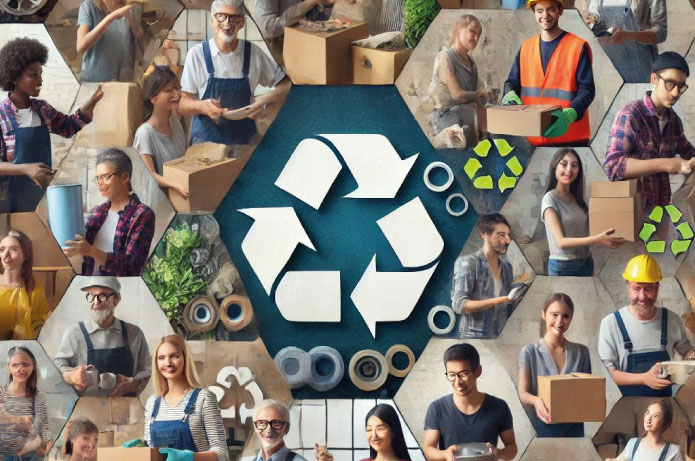Участь громадськості у зворотній логістиці електронного та електричного обладнання та побутової техніки надзвичайно важлива для забезпечення екологічно безпечної остаточної утилізації цих відходів. Надзвичайно важливо, щоб законодавство передбачало участь споживачів у рамках спільної відповідальності за життєвий цикл продукту.
Реалізація цього процесу відбувається шляхом збору у спеціально відведених для цього типу відходів пунктах, уникаючи утилізації у звичайних смітниках або традиційній переробці. Для ефективності зворотної логістики важливо, щоб громадськість дотримувалася певних правил утилізації цих виробів, таких як відокремлення електронного та електричного обладнання від інших видів відходів, забезпечення їх вимкнення та чистоти, а також утилізація їх у неушкодженому вигляді, коли це можливо.
Рекомендується стерти персональні дані, що містяться на пристроях, перед утилізацією, пам’ятаючи, що немає можливості відновити вироби після їх утилізації. Правильна утилізація електронного та електричного обладнання допомагає запобігти забрудненню води та ґрунту, оскільки багато з цих виробів містять токсичні компоненти, такі як ртуть та кадмій. Крім того, це запобігає забрудненню повітря, особливо у випадку приладів, що використовують холодоагенти, такі як холодильники та кондиціонери, які у разі витоку можуть пошкодити озоновий шар.
Важливо наголосити, що громадськість не несе витрат на належну утилізацію, оскільки зворотна логістика фінансується виробниками та імпортерами. Правильно утилізуючи відходи, споживачі роблять свій внесок у збереження навколишнього середовища, а також здобувають більше місця вдома, позбавляючись застарілого або невикористаного обладнання.
Підвищення обізнаності про зворотну логістику та заохочення активної участі громадськості не повинно обмежуватися школами, а має поширюватися на підприємства та всі домогосподарства. З частим придбанням нової технологічної продукції вкрай важливо, щоб належна утилізація старого обладнання стала звичкою, спрямованою не лише на індивідуальну вигоду, але й на колективну та екологічну користь.
Беручи участь у зворотній логістиці, громадськість робить внесок у повторне використання матеріалів та компонентів з цього обладнання у виробництві нової продукції, сприяючи циркулярній економіці та зменшуючи потребу у видобутку природних ресурсів. Таким чином, виграють усі: довкілля, компанії та саме суспільство, яке отримує вигоду від більш сталого та відповідального виробничого циклу.


